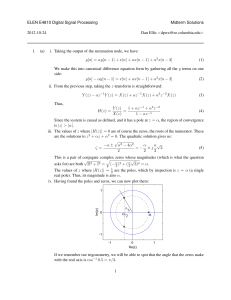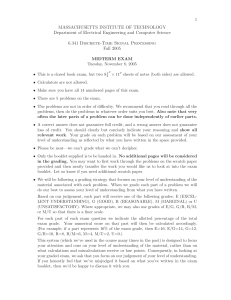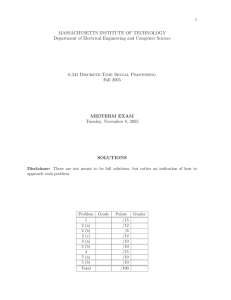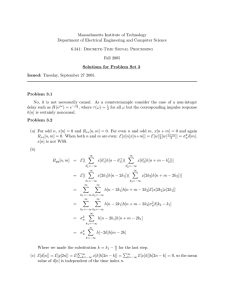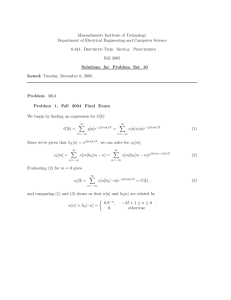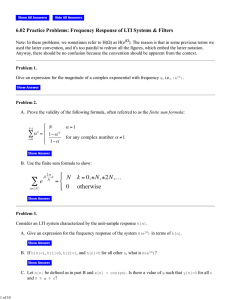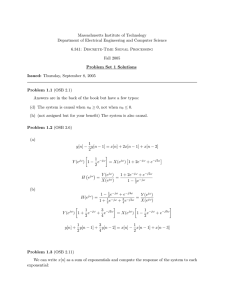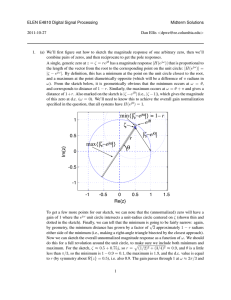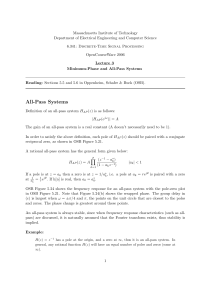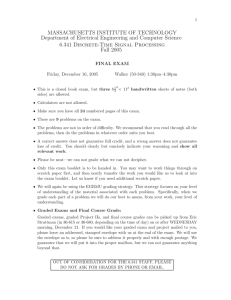Massachusetts Institute of Technology Department of Electrical Engineering and Computer Science
advertisement
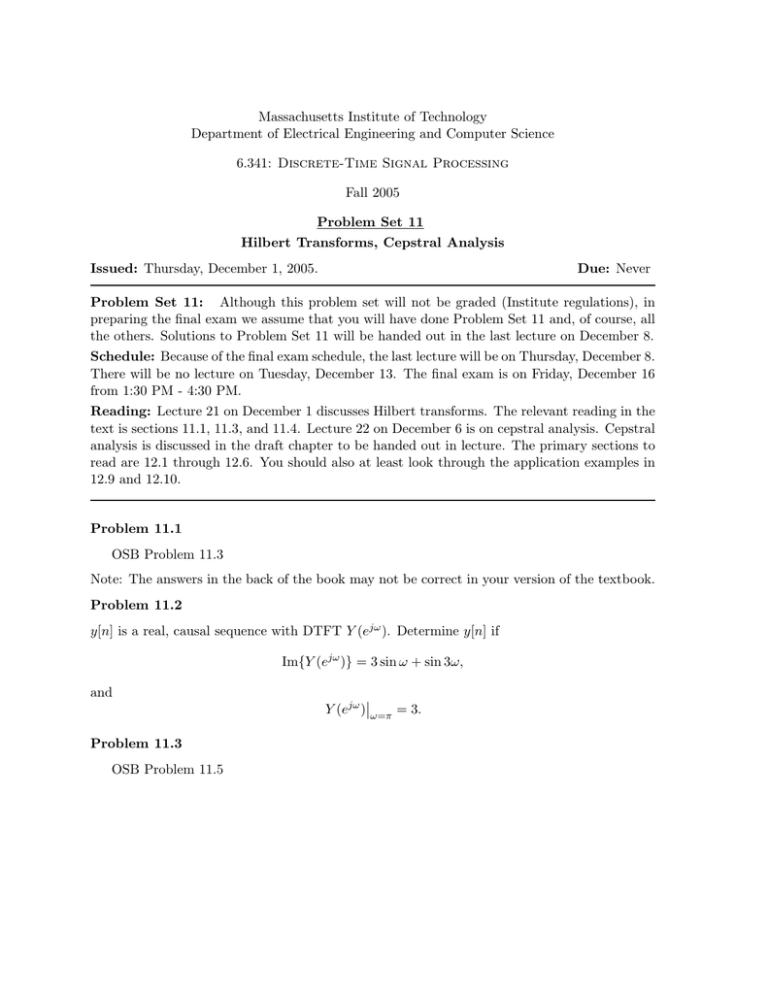
Massachusetts Institute of Technology
Department of Electrical Engineering and Computer Science
6.341: Discrete-Time Signal Processing
Fall 2005
Problem Set 11
Hilbert Transforms, Cepstral Analysis
Issued: Thursday, December 1, 2005.
Due: Never
Problem Set 11: Although this problem set will not be graded (Institute regulations), in
preparing the final exam we assume that you will have done Problem Set 11 and, of course, all
the others. Solutions to Problem Set 11 will be handed out in the last lecture on December 8.
Schedule: Because of the final exam schedule, the last lecture will be on Thursday, December 8.
There will be no lecture on Tuesday, December 13. The final exam is on Friday, December 16
from 1:30 PM - 4:30 PM.
Reading: Lecture 21 on December 1 discusses Hilbert transforms. The relevant reading in the
text is sections 11.1, 11.3, and 11.4. Lecture 22 on December 6 is on cepstral analysis. Cepstral
analysis is discussed in the draft chapter to be handed out in lecture. The primary sections to
read are 12.1 through 12.6. You should also at least look through the application examples in
12.9 and 12.10.
Problem 11.1
OSB Problem 11.3
Note: The answers in the back of the book may not be correct in your version of the textbook.
Problem 11.2
y[n] is a real, causal sequence with DTFT Y (ejω ). Determine y[n] if
Im{Y (ejω )} = 3 sin ω + sin 3ω,
and
Problem 11.3
OSB Problem 11.5
¯
Y (ejω )¯ω=π = 3.
Problem 11.4
The system shown in Figure 11.4-1 is referred to as a 90◦ phase splitter.
- HAP 1 (ejω )
- y1 [n]
- HAP 2 (ejω )
- y2 [n]
x[n]
Figure 11.4-1: A 90◦ phase splitter.
The two all-pass systems HAP 1 (ejω ) and HAP 2 (ejω ) are designed so that their phases differ by
π/2:
HAP 1 (ejω ) = ejθ(ω) , −π < ω < π
(
ej(θ(ω)−π/2) , 0 < ω < π
jω
HAP 2 (e ) =
ej(θ(ω)+π/2) , −π < ω < 0.
If we consider y1 [n] and y2 [n] to be the real and imaginary parts respectively of a complex
signal w[n], i.e. w[n] = y1 [n] + jy2 [n], show that
W (ejω ) = 0,
−π ≤ ω < 0
and
|W (ejω )| = 2|X(ejω )|,
0<ω<π
where W (ejω ) and X(ejω ) are the DTFTs of w[n] and x[n] respectively.
Note: You may find it helpful to read section 11.4 before doing this problem.
Problem 11.5
The sequence
h[n] = δ[n] + αδ[n − n0 ]
is a simplified model for the impulse response of a system that introduces an echo. Assume
that |α| < 1.
Determine the complex cepstrum ĥ[n] for this sequence. Sketch the result.
Problem 11.6
Equation (12.34) in Section 12.4 of the Chapter 12 draft presents a relationship between a
sequence x[n] and its complex cepstrum x̂[n].
x[n] =
∞ µ ¶
X
k
x̂[k]x[n − k],
n
n 6= 0
k=−∞
In addition, in Section 12.5.2 it is shown that if x[n] is minimum phase, then the complex
cepstrum is zero for n < 0.
Using the above fact with x[n] being minimum phase, show that Eq. (12.34) implies:
1. x̂[n] can be computed recursively from x[n],
2. x̂[n] at any time n0 depends only on x[n] for n ≤ n0 (i.e. Eq. (12.34) reduces to a causal
computation).
Problem 11.7
(a) x[n] is a causal, real-valued sequence with Fourier Transform X(ejω ). It is known that
Re{X(ejω )} = 1 + 3 cos ω + cos 3ω.
Determine a choice for x[n] consistent with this information and specify whether or not
your choice is unique.
(b) Let x̂[n] be the complex cepstrum of a real-valued sequence x[n].
Specify whether the following statements are true or false. Give a brief justification for
your answer.
Statement 1: If x1 [n] = x[−n] then x̂1 [n] = x̂[−n].
Statement 2: Since x[n] is real-valued, the complex cepstrum x̂[n] must also be realvalued.

